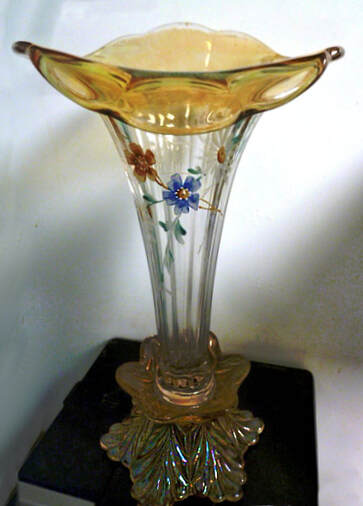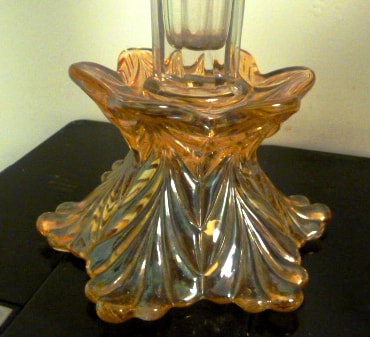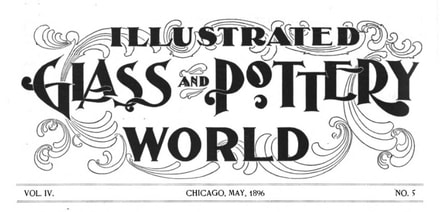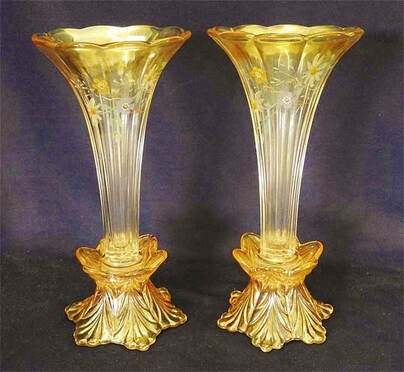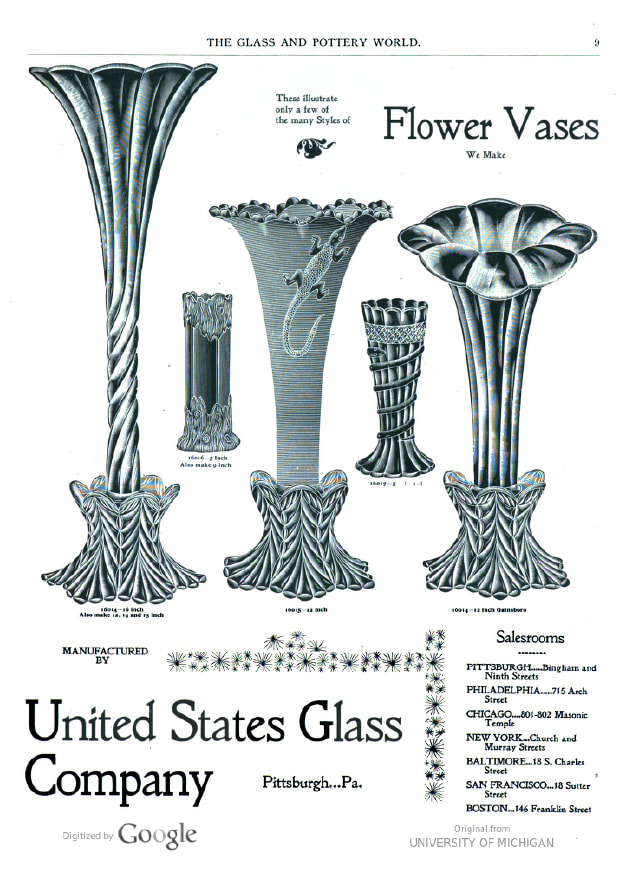Collectors Facts - Gainsboro, United States Glass
Sincere thanks to Greg Dilian for his photos bringing this amazing vase to our attention, and also to Terri Frauzel for the identification.
Thanks also to the EAPG Society and Sid Lethbridge, as well as Google for the catalogue digitisation.
Thanks also to the EAPG Society and Sid Lethbridge, as well as Google for the catalogue digitisation.
A fascinating post appeared in our Carnival Glass Network Facebook Group on January 25, 2020. It was the vase pictured above – iridised at its mouth and on its magnificent base, and with delicate enamelled floral decoration on the central section. The elaborate base particularly caught everyone’s eye.
Greg’s vase is iridised (albeit not all-over) and it is moulded. The vase stands 12 inches high, and as Greg explains, it is in one entire piece. The top has a JIP (Jack in the Pulpit) shape and the lower part has an acanthus style, moulded design. Marigold iridescence can be seen on the very top of the vase, while the acanthus patterned lower section is also beautifully iridised.
Greg’s vase is iridised (albeit not all-over) and it is moulded. The vase stands 12 inches high, and as Greg explains, it is in one entire piece. The top has a JIP (Jack in the Pulpit) shape and the lower part has an acanthus style, moulded design. Marigold iridescence can be seen on the very top of the vase, while the acanthus patterned lower section is also beautifully iridised.
|
It’s Carnival Glass! But who made it and when? The answer was provided just one hour and forty minutes after Greg posted his mystery vase into our Group. Terri Frauzel explained that she believed it was a United States Glass Co. item. Then, an hour and a half later, she showed us the United States Glass ad (shown below on the right) on the EAPGS website. It illustrated the exact vase, and we were blown away! The ad appeared in "The Glass and Pottery World" journal, and the date of the ad was May, 1896 (see below). |
A pair of Gainsboro vases, courtesy Seeck Auctions.
As well as Greg’s beautiful JIP shaped vase, there are a handful of others known without the JIP shaping, and with slightly different enamelled decor. |
|
The date of the ad - May 1896 - clearly shows us that a form of what we now call Carnival Glass was being made by the United States Glass Company at this early time. The ad featured three vases with the identical, acanthus-leaf base.
The ad does not show any of these vases with the painted floral decor, but only part of the range was shown. At the top of the ad it stated that: "These illustrate only a few of the many Styles of Flower Vases We Make". Also, by studying this 1896 ad, we know that the original makers name (OMN) given to this pattern by United States Glass was Gainsboro, and that the three vases that had the same unusual base all had the pattern number, 16014. The text below the vase in question cannot be seen too well in this ad so we have enlarged it below.
More early "Carnival Glass" discovered! This ad for the United States Glass Company was published around the same time that, as we discovered, the very first "experimental" examples of Carnival Glass were being made in England. In another Collectors Facts, we explain how we made this discovery, which was instigated by a very small, iridised vaseline creamer which we named "Tiny Daisy". It was made by Edward Moore at the Tyne Flint Glass Works in England around 1891. Here is the link: Collectors Facts - Tiny Daisy. See more Collectors Facts |
Source: Public Domain image.
|
